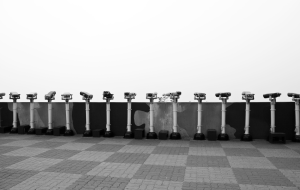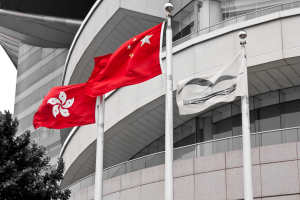Over 20 million people live and work in the metropolitan area of Seoul, South Korea. The city’s dense network of subways, highways, and tall buildings extends as far as the horizon on either side of the Han River and in almost all directions. Current growth patterns see Seoul’s original urban fabric of low-rise buildings being replaced en masse by Tokyo-style mega developments built over subway stations and shopping malls. All of this vertical development is justified, made necessary even, by increasing land values in the central city where transit coverage and cultural amenities are most heavily concentrated. Needless to say, excess space is in short supply.
A comparable situation exists in Hong Kong, one of China’s two Special Administrative Regions, and is even more pronounced due to severe limitation of buildable land. This limitation is a consequence of both geography (the territory is comprised of mountainous islands) and policy (previous British colonial rule demarcated 75% of land as nature preserves). The lack of available land is so extreme that it has now become economical for developers to artificially extend the boundaries of Hong Kong Island in order to build just a handful of buildings on reclaimed land. Sometimes, as in the case of the convention center, the harbor is dredged for years to construct a single building.
Yet while these two cities deal with approximate economics of land use, they are linked in a more significant fashion by their complete reliance on empty land holding no development potential whatsoever: political buffer zones. Whatever the magnitude of growth and increase in real estate values that has occurred in these cities over the last half century, no land holds more value to Seoul than Korea’s DMZ and to Hong Kong than its undeveloped border with mainland China. Without these buffer zones, it is almost certain that neither city would exist in its present form. This is because these two zones separate capitalistic, market driven societies that host international business from communist, state-run economies to the north. To be sure, North Korea and mainland China hold widely different viewpoints on global politics and economics. While Pyongyang remains highly isolated and stagnant, Shenzhen is growing explosively and increasingly fostering closer ties to its more famous neighbor to the south. But the fact remains that native Hong Kongers seldom identify with the mainland and many young people are leery of 2046, when China’s ‘one country, two systems’ approach to governing Hong Kong comes to an end.
In visiting Seoul and Hong Kong then, I have witnessed for the first time politicization of space. These are spaces shaped and defined not by designers or planners but by national security interests and economic preservation. Like architecture however, their usefulness and purpose lies in the void, not the walls that shape it.
Matt Luery
Filed under: Capitalism, China, DMZ, Government, Hong Kong, Korea




